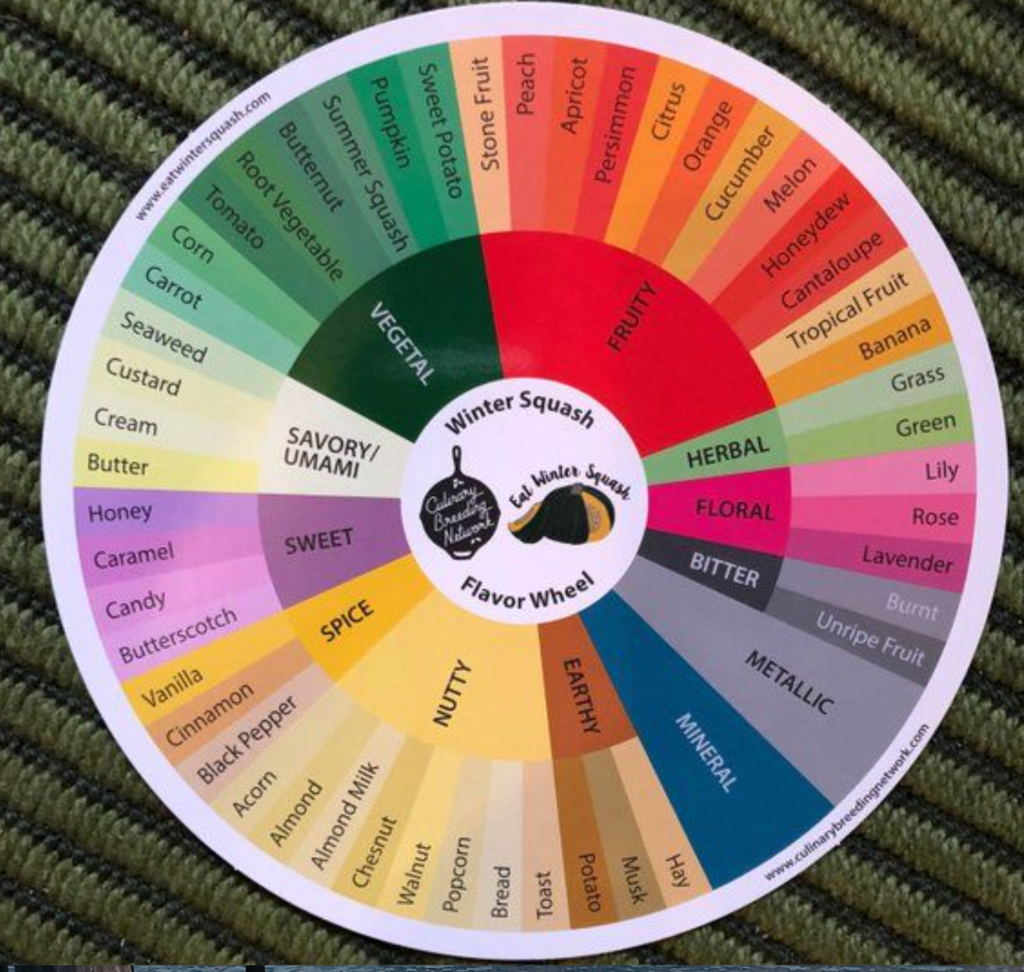OBJECTIVE
To bring ourselves back to a time without grocery stores and experience the difference in taste between varieties of a crop that grows in our region.
ESSENTIAL QUESTIONS
What and how did the Native peoples of America eat?
What does it mean to have many varieties of the same crop?
MATERIALS NEEDED
4 types of squash (ex. Butternut, acorn, spaghetti, and kabocha)
Grid to score taste test
Plates and forks for tasting
Salt for tasting
Maple syrup (optional) for tasting
PROCEDURE
Roast the squashes whole the night before, bring in cold or at room temperature and set up a table for tasting, or 4 desk stations. Set up a description (or a seed story) about each variety at the corresponding station
- Who are the Native Americans? What did they eat?
- Can you imagine a time with no grocery stores? How would you survive?
- Native Americans would survive on native or indigenous plants that they would gather or grow themselves. What does the word “native” or “indigenous” mean?
- The Native Americans planted and grew squash 8,000 years ago. How would they cook it? Over hot coals, boil it in clay pots
- Is there just one type of squash? Show them a seed catalog’s entire squash section. Show them the roasted whole squashes just as the Native Americans might have done. What is inside?
What could they do with the seeds? The flesh? - Today we’ll do a taste test of these different squash varieties. We’ll make notes of the outside color, the inside color, and what it tastes like. Then you can circle if you’d try it again (yes, no, maybe).
Stations method:
Bring the group to the stations (tablecloths on tables with 4 cutting boards, 1 for each squash)
Cut each squash together so students can note the outer and inner colors on their taste test chart. For example: “This is a Hubbard squash, what color is the outside? Now open, what color is the inside?” Scoop seeds into a large bowl. Continue to the next squash.
Once all squashes are open and ready for tasting, start cutting up cubes of the squashes and separate the class into four groups, you’ll set a timer and have them go clockwise to taste each squash with a fork and plate, if they have a favorite they can get seconds (be prepared for extremes, some will love it, some will hate it). Encourage students to use lighter language to express their distaste (“I don’t like it” v. “This is gross!”). You can also use the attached tasting wheel to help students find descriptive words of what they’re experiencing. Have one student in each group read that variety’s seed story or description from a seed catalog at some point during the tasting time.
Any students that refuse to eat squash must help us not be wasteful! Have them separate the seeds from the pulp into a separate small bowl (it’s still a good idea to ask students to try one small bite before becoming seed separators)
Once students have tried all the squashes, make sure they finish their tasting notes and circle their favorite squash..
Reflect: Was anyone surprised by the different squashes? How so?
- Raise your hand if you could survive on squash? You don’t have to love it, but will you starve?
- What else could you do with the remaining squash we have? Roast seeds, add seeds to pemmican (a super nutritious Native American staple food – think home-made energy bars), dry the rest of the squash for use in soups, etc.
FOLLOW UP & EXTENSIONS
Colonial recipes versus Native American recipes with the same crop
Three Sisters Garden planning, execution, and harvest
Boiled bread recipe, any Plymouth plantation recipes
Seed catalog investigation looking for colonial or Native American crops
Look further into Native American culinary heritage. Explore pemmican recipes, and experiment with drying thin strips of squash.









